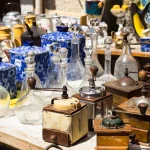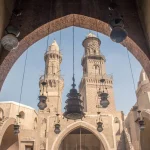Egyptian Art and Artists: A Celebration of Culture and History
We’re going to know everything about Egyptian Art and Artists in detail through this blog post from FTS press.
Egyptian art is one of the most well-known and celebrated forms of ancient art in the world. The art of the pharaohs, which dates back more than 5,000 years, has inspired artists and art lovers for generations.
Egyptian Art and Artists
The ancient Egyptians were known for their exquisite craftsmanship, attention to detail, and use of bright colors. Their art was often used to depict scenes from daily life, religious rituals, and important events in history. The use of hieroglyphics and symbols added a unique layer of meaning to their art, making it more than just a visual representation.
Today, the legacy of ancient Egyptian art continues to inspire modern artists and designers. Many contemporary artists draw upon the rich symbolism and motifs of ancient Egyptian art in their work, creating a fusion of old and new.
One such artist is Hossam Dirar, a Cairo-based artist who draws inspiration from the ancient Egyptian gods and goddesses. His work combines traditional Egyptian motifs with modern techniques, creating a unique style that pays homage to the past while looking towards the future.
Another notable Egyptian artist is Nermine Hammam, who is known for her provocative and thought-provoking photography. Her work often explores themes of identity, politics, and cultural heritage, using the backdrop of Egypt’s rich history to tell a story about the present.
Aside from individual artists, Egypt is also home to a thriving art scene, with museums, galleries, and festivals showcasing the work of both established and emerging artists. The Cairo Opera House, for example, is a popular venue for art exhibitions, concerts, and theater performances. The Cairo Biennale, a major contemporary art festival, attracts artists from around the world to showcase their work.
Egyptian art has a long and rich history that spans over 5,000 years. The art of ancient Egypt was heavily influenced by their religion and their belief in the afterlife. Egyptian art was often used to depict scenes from daily life, religious rituals, and important events in history. Their art was also used to decorate the walls of temples, tombs, and palaces.
One of the most famous forms of Egyptian art is hieroglyphics. Hieroglyphics are symbols and pictures that were used to write the Egyptian language. These symbols were often used in art to add meaning to the image, making it more than just a visual representation.
The use of bright colors was also a hallmark of ancient Egyptian art. The colors were symbolic and had meaning. For example, the color green represented new life and growth, while red was associated with the god of the dead.
In addition to ancient Egyptian art, contemporary Egyptian art is also thriving. The modern art scene in Egypt is diverse and reflects the country’s rich cultural heritage. Many contemporary artists draw inspiration from ancient Egyptian art and motifs, creating a fusion of old and new.
look here:Tips for Tourists in Egypt: Cultural Etiquette and Safety Advice
The Cairo Opera House
The Cairo Opera House is a popular venue for art exhibitions, concerts, and theater performances. It houses several galleries and hosts regular exhibitions featuring the work of both established and emerging artists. Other galleries and museums in Egypt that showcase the work of artists include the Egyptian Museum in Cairo, the Luxor Museum, and the Alexandria Museum of Fine Arts.
Ancient Egyptian art was influenced by the country’s religion and mythology. Art was seen as a way to connect with the gods and to communicate important ideas and stories to the people. As a result, much of the art from this time was focused on religious themes, such as depictions of gods, goddesses, and pharaohs.
One of the most famous examples of ancient Egyptian art is the Great Sphinx of Giza. The Sphinx is a massive statue of a mythical creature with the head of a human and the body of a lion. It is believed to have been built around 2500 BCE and was likely intended to guard the nearby pyramids.
Another important aspect of ancient Egyptian art was the use of funerary art. Tombs were often decorated with elaborate murals and sculptures that depicted scenes from the afterlife, such as the weighing of the heart ceremony, where the deceased’s heart was weighed against a feather to determine if they were worthy of entering the afterlife.
In addition to traditional forms of art, such as sculpture and painting, ancient Egyptians were also skilled in jewelry making, pottery, and textile production. Many of these crafts are still practiced today and are highly valued for their quality and beauty.
Modern Egyptian art is diverse and reflects the country’s history and culture. Contemporary artists draw inspiration from ancient Egyptian art, as well as from modern art movements from around the world. Some notable modern Egyptian artists include Sherin Guirguis, Mohamed Abla, and Youssef Nabil.
Egypt is home to several important art institutions, including the Museum of Egyptian Antiquities in Cairo, which houses an extensive collection of ancient Egyptian art and artifacts. Other notable art institutions in Egypt include the Bibliotheca Alexandrina in Alexandria, which houses a large collection of contemporary art, and the Palace of Arts in Cairo, which hosts regular exhibitions and events.
Look here: IS EGYPT SAFE FOR TRAVEL?
the most distinctive features of ancient Egyptian art
One of the most distinctive features of ancient Egyptian art is the stylized way in which figures are portrayed. Human figures, for example, are typically shown with their feet flat on the ground, their arms at their sides, and their heads in profile. This style of representation, which is known as “frontality,” was intended to convey a sense of order and stability.
Another key element of ancient Egyptian art is the use of symbolism. For example, certain animals were associated with specific gods or goddesses and were often depicted in art as a way of invoking their power or protection. Similarly, colors also had symbolic meanings. For instance, the color blue was associated with the Nile River and the sky, while green represented growth and fertility.
Egyptian art also played an important role in the country’s economy. Artisans and craftspeople were highly valued for their skills, and their work was in high demand both in Egypt and abroad. Trade networks existed throughout the ancient world, and Egyptian art objects could be found as far away as Greece, Rome, and Persia.
In modern times, Egyptian art has continued to evolve and adapt to changing cultural influences. Contemporary Egyptian artists work in a variety of mediums, including painting, sculpture, photography, and installation art. Many of these artists draw on traditional techniques and motifs, while also incorporating new ideas and styles.
Egypt is home to several prominent art institutions, including the Museum of Islamic Art in Cairo, which houses a collection of Islamic art from across the Muslim world. The Mahmoud Khalil Museum, also in Cairo, is home to a diverse collection of art, including works by European masters such as Monet, Renoir, and Van Gogh.
Egyptian art is known for its grandiose style and was created to serve a variety of purposes, including religious, political, and funerary. From the grand temples and tombs to the intricate decorative objects, art was an integral part of Egyptian life.
Look here:Cruising the Nile River: A Luxurious Way to Experience Egypt
the most iconic forms of ancient Egyptian art
One of the most iconic forms of ancient Egyptian art is the hieroglyphs, which were used to write the Egyptian language. These hieroglyphs were often accompanied by colorful illustrations and were used to record important events, stories, and beliefs. The development of the hieroglyphic script allowed for an unprecedented level of communication and cultural exchange within ancient Egypt.
Egyptian art was also heavily influenced by the country’s natural environment. The Nile River, which flows through the heart of Egypt, was a source of life and inspiration for many artists. Depictions of the Nile and its flora and fauna can be found in numerous ancient Egyptian artworks.
Egyptian art is also known for its depictions of powerful and godlike figures. Pharaohs and gods were often portrayed with a combination of human and animal attributes. These hybrid creatures, known as “theriomorphic” figures, were intended to convey the power and importance of these figures in Egyptian society.
In addition to the ancient art, Egypt has a rich contemporary art scene with many modern artists making waves both domestically and internationally. Artists such as Huda Lutfi, Youssef Nabil, and Ghada Amer are just a few examples of contemporary Egyptian artists who have gained widespread recognition for their work.
In conclusion
Egyptian art is a rich and varied field that encompasses everything from the monumental and grandiose to the intimate and personal. Whether you are interested in the history and mythology of ancient Egypt or the contemporary art scene, there is something for everyone to discover and explore in the art of Egypt.








